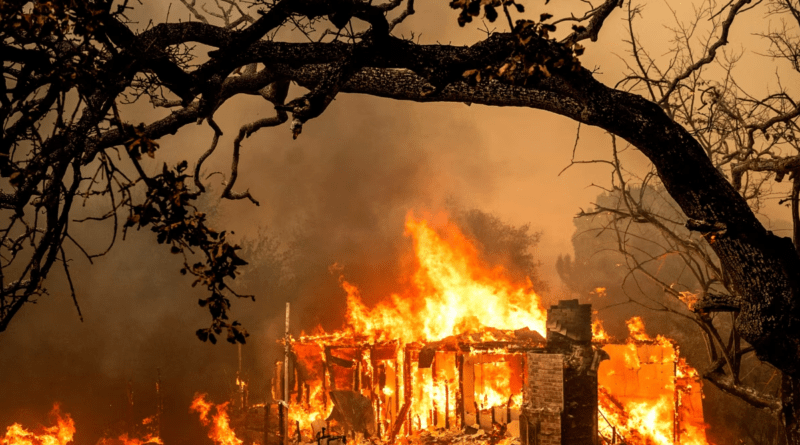“Hot” Independence Day: abnormal heat and fires cover a quarter of the U.S. territory
Meteorologists say dangerously high temperatures are expected across a huge swath of the United States on Wednesday – just ahead of the July 4 Independence Day long weekend – while a fast-spreading wildfire in California has already forced thousands of residents from their homes.
About 110 million people in 21 states – in the U.S. West, the southern plains, and the mid-Atlantic coast of America – will spend their vacations under the constraints of the heat wave.
Temperatures are expected to exceed 38 degrees Celsius over the next few days, the U.S. National Weather Service said.
“It’s very hot; I don’t know how to even express it,” said Jacob Asherman, a meteorologist at the National Weather Service’s Weather Prediction Center in College Park, Maryland.
“Most of the country is experiencing weather that is too hot,” he explained.
The hot weather came just as the country began the Independence Day weekend, a holiday when many Americans are used to getting out and walking the streets and parks to see fireworks, parades, music festivals and the like.
“Temperatures in Portland, Oregon, where weather conditions are typically mild, are expected to reach 38 C on Friday, a record for the summer season, while Jackson, Mississippi, known for its hot weather, is expected to reach 46 C”, the service said.
When Portland native Jen Scott, a hardware store manager, was a child, “it was a big deal if the temperature rose to 30 Celsius,” she recalled. – In early July, it wasn’t usually more than 25 degrees. But in the last few years it’s gotten really hot. And over 35 is crazy. We’re not used to that,” she stated.
Scott, who runs Pearl Ace Hardware in Portland, said fans and air conditioners are selling out “like hotcakes.”
Temperatures in southwest Phoenix are expected to rise to 45 C on Wednesday and 47 C by Friday, but relief is not expected.
Last summer, Arizona’s capital city saw a record 54 consecutive days in which temperatures reached 43 C or higher, including 31 consecutive days in July.
The abnormal heat, combined with brutal wind gusts and low humidity in Northern California, has been particularly challenging for the 500 firefighters battling the so-called Thompson Fire, which broke out Tuesday morning.
Photos and video footage from the area about 50 miles north of Sacramento, the state capital, showed flames tearing through barrier structures and setting cars on fire.
Smoke from the fires in Northern California is spreading south to San Francisco, where 7.7 million Bay Area residents have been advised to limit driving and not launch fireworks on July 4 because of poor air quality.
